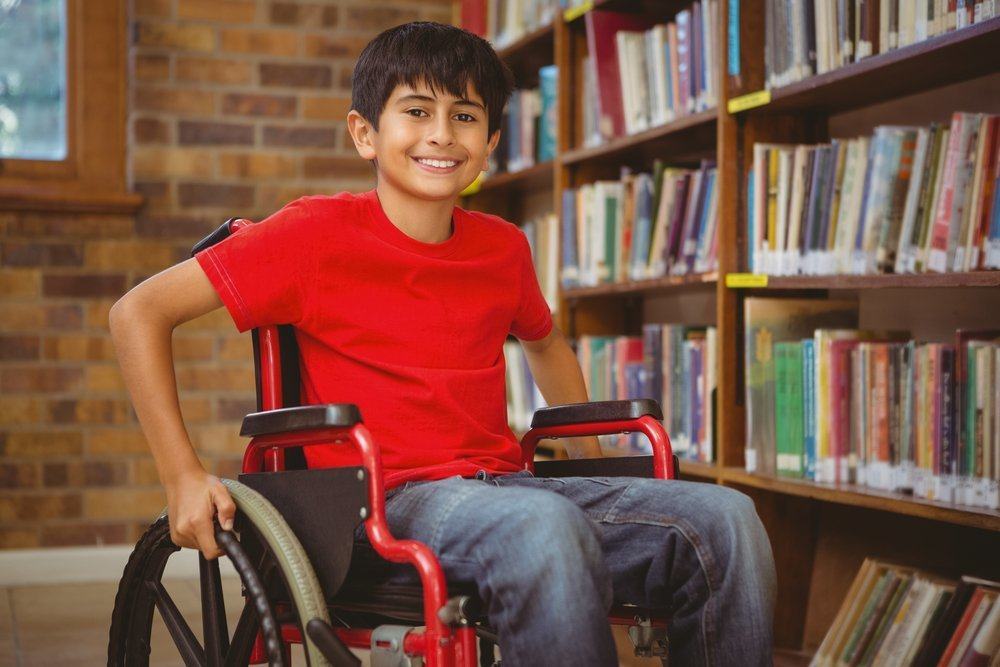Adrenoleukodystrophy (ALD), a rare, paralyzing disease

Adrenoleukodystrophy (ALD) is a term used to describe several different inherited conditions that affect the nervous system and adrenal glands. Other names for ALD are adrenomyeloneuropathy, AMN, and the Schilder-Addison complex. But what is it, really?
What happens to people with adrenoleukodystrophy (ALD)?
Adrenoleukodystrophy (ALD) is one of a group of brain disorders, called leukodystrophies, that damage the myelin (the cylindrical sheath that encloses some nerve fibers) of the nervous system and adrenal cortex.
ALD is different from neonatal adrenoleukodystrophy, which is a disease of the newborn and in the early stages of development – which belongs to the group of peroxisomal biogenesis disorders.
Brain function will decrease as the myelin sheath is gradually stripped by this disease from the nerve cells of the brain. Myelin functions as a regulator of the way humans think and controls the work of the body’s muscles. Without this sheath, nerves cannot work. In other words, the nerves stop sending signals to the muscles and other supporting elements of the central nervous system about what to do.
Some individuals affected by ALD have adrenal insufficiency, which means a deficiency in the production of certain hormones (adrenaline and cortisol, for example) that causes abnormalities in blood pressure, heart rate, sexual development, and reproduction. Some of the ALD patients experience a number of serious neurological problems that can affect mental function, leading to paralysis and reduced life span.
Who gets adrenoleukodystrophy (ALD)?
ALD is an X-linked recessive genetic disorder caused by a disruption in the ABCD1 gene in the X chromosome. This gene abnormality causes the formation of a mutation in the protein adrenoleukodystrophy (ALDP).
Adrenoleukodystrophy protein (ALDP) helps your body break down very long chain fatty acids (VLCFA). When the body is unable to produce enough ALDP, fatty acids will accumulate in the body and damage the myelin sheath. This condition can harm the outer lining of the spinal cord cells, brain, adrenal glands, and testes.
Adrenoleukodystrophy knows no race, ethnicity or geographic boundaries. Reporting from the Health Line, according to the Oncofertility Consortium, this rare disease affects 1 in 20-50 thousand people – especially men, children and adults.
Women have two X chromosomes. If a woman inherits an X chromosome mutation, she still has one spare X chromosome to help offset the effects of the mutation. Therefore, if a woman has this condition, she is likely to show no symptoms at all – or insignificant, if any. Meanwhile, males only have one X chromosome. This means that boys and adults lack the protective effect of the extra X chromosome, which makes them more susceptible to being affected (if they inherit an ALD gene mutation).
Signs and symptoms of adrenoleukodystrophy (ALD)
In children
The most damaging form of ALD is childhood ALD, usually starting to develop at 4-8 years of age. Children who are healthy and normal, at first, will show behavioral problems – such as self-isolation or difficulty concentrating. Gradually, as the disease eats away at the brain, visible symptoms will begin to worsen, including difficulty swallowing, difficulty understanding language, blindness and hearing loss, muscle spasms, loss of body muscle control, progressive loss of intellectual function of the brain, motor impairment, crossed eyes, dementia. progressive, up to a coma.
In adolescents
ALD in adolescents begins at the age of 11-21 years, with the same symptoms but the development of symptoms is slightly slower than ALD in children.
In adults
Adrenomyeloneuropathy, the adult version of ALD, begins in the late 20s to 50s, and is characterized by difficulty walking, progressive body weakness, and leg stiffness (paraparesis), loss of coordination skills, excess muscle mass (hypertonia), difficulty speaking (dysarthria), seizures, adrenal deficiency, difficulty focusing and remembering visual perception, and vision loss. These symptoms will develop within a few decades – later than ALD. The symptoms of adult ALD can be similar to those of schizophrenia and dementia.
This deterioration will occur without stopping and can lead to permanent paralysis – usually within 2-5 years after initial diagnosis – to death. Death from ALD usually occurs within 1-10 years after the onset of symptoms.
Can adrenoleukodystrophy (ALD) be cured?
Adrenoleukodystrophy is a disease that is carried on for life. This means that the disease is incurable (as far as medical research has gone), but doctors can slow down the malignancy of the symptoms.
Hormone therapy can save lives. The abnormal function of the adrenal glands can be treated with corticosteroid replacement therapy. Steroid therapy can be used to treat Addison’s disease (adrenal insufficiency). There is no specific method for treating other types of ALD. Individuals with ALD can undergo symptomatic (symptom management) and supportive care, including physical therapy, psychological support, and special education.
Is lorenzo oil effective as an alternative treatment for adrenoleukodystrophy (ALD)?
A number of recent studies have shown that a mixture of oleic acid and erucic acid, known as Lorenzo oil, given to boys with ALD before the onset of symptoms can prevent or delay progression of the disease. It is not known whether lorenzo oil can be used to manage adrenomyeloneuropathy (adult version of ALD). Furthermore, Lorenzo oil has been shown to have no effect on boys with ALD who have developed symptoms.
Bone marrow transplantation has been shown to be successful in individuals with early stage adrenoleukodystrophy (ALD). However, this procedure carries a risk of death and is not recommended for those with acute or severe ALD, those who develop symptoms as adults, or in neonatal cases.
ALSO READ:
Hello Health Group and Hello Sehat do not provide medical advice, diagnosis or treatment. Please check our editorial policy page for more detailed information.